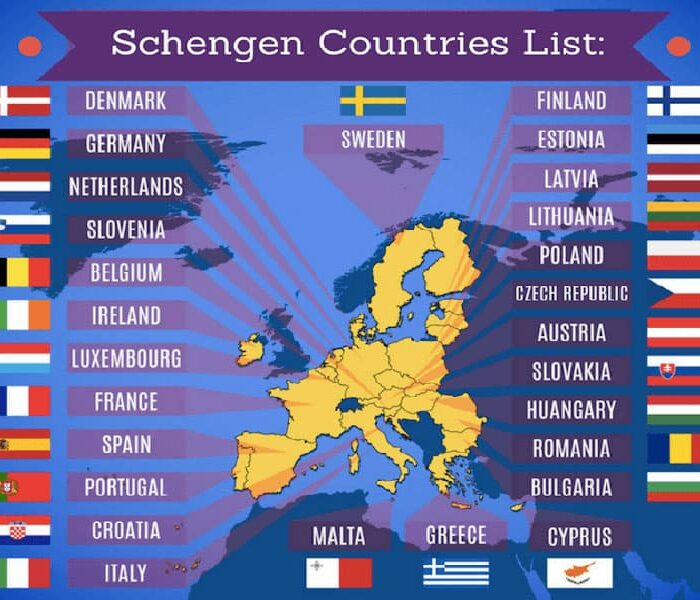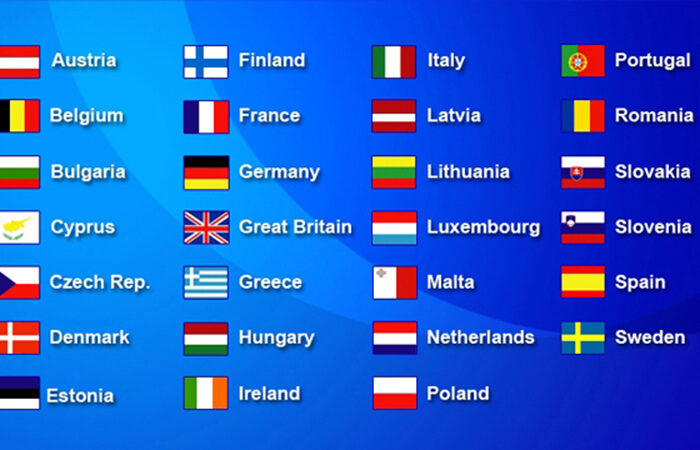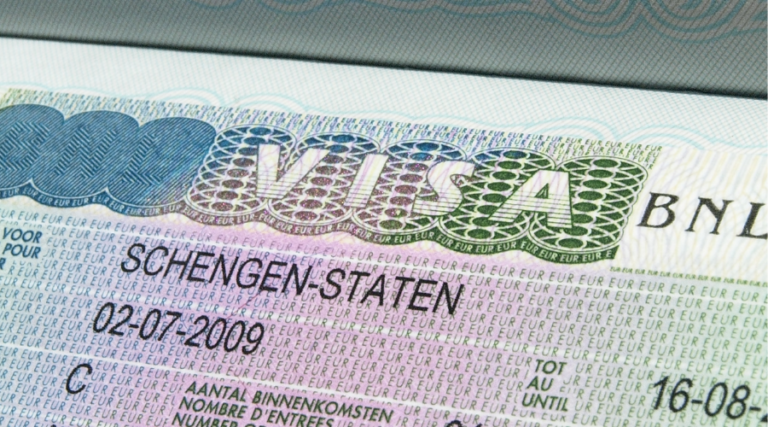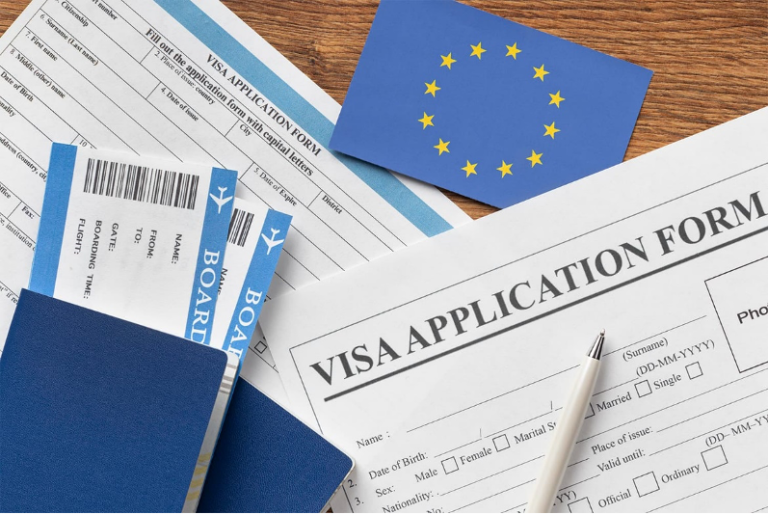Tin tức du lịch
Đơn giản là không có cách nào để tham quan Châu Âu mà không bị kinh ngạc bởi vẻ đẹp tự nhiên, lịch sử hào hùng và sự đa dạng nghệ thuật và ẩm thực rực rỡ của nó! Bạn có thể tìm thấy các bảo tàng mới xây hoặc đã được tân trang lại từ những công trình từ nhiều thế kỷ trước. Bên cạnh đó, những tuyệt tác kiến trúc, cùng cơ sở hạ tầng đầy ấn tượng, và hàng loạt di sản vật thể, phi vật thể nổi tiếng của thế giới… sẽ là động lực cho bạn lên đường khám phá châu Âu. Cho dù đó là ẩm thực hay văn hóa dân gian, phòng xông hơi khô hay khoa học kỹ thuật hiện đại, thể thao năng động hay dịch vụ chăm sóc sức khỏe, châu Âu luôn có cái gì đó vô cùng hấp dẫn dành cho mỗi người.
Tuy vậy, trước mỗi chuyến châu Âu, vấn đề khiến nhiều lo lắng nhất chính là thủ tục xin visa Schengen. Vậy visa Schengen là gì? Có khó xin hay không? Hãy tham khảo hướng dẫn và kinh nghiệm xin visa Schengen để bạn có tỷ lệ thành công cao nhất có thể nhé!
Khu Vực Schengen Là Gì?

Khu vực Schengen biểu thị một khu vực nơi 27 quốc gia châu Âu bãi bỏ biên giới nội bộ của họ, để người dân đi lại tự do và không bị hạn chế, hài hòa với các quy tắc chung để kiểm soát biên giới bên ngoài và chống tội phạm bằng cách tăng cường hệ thống tư pháp chung và hợp tác cảnh sát.
Khu vực Schengen bao gồm hầu hết các quốc gia thuộc Liên minh châu Âu (EU), ngoại trừ Ireland và các quốc gia sắp trở thành một phần của Khu vực Schengen như: Romania, Bulgaria và Síp. Mặc dù không phải là thành viên của EU, các quốc gia như Na Uy, Iceland, Thụy Sĩ và Lichtenstein cũng thuộc của Khu vực Schengen. Theo đó, người có visa Uniform Schengen có thể đi đến tất cả 27 quốc gia thành viên của Khu vực Schengen.
Khối Schengen Gồm Những Quốc Gia Nào?

Hiện tại, Khu vực Schengen bao gồm 27 quốc gia thành viên, bao gồm: Áo, Bỉ, Cộng hòa Séc, Croatia, Đan Mạch, Estonia, Phần Lan, Pháp, Đức, Hy Lạp, Hungary, Iceland, Ý, Latvia, Liechtenstein, Litva, Luxembourg, Malta, Hà Lan, Na Uy, Ba Lan, Bồ Đào Nha, Slovakia, Slovenia, Tây Ban Nha, Thụy Điển và Thụy Sĩ.
Tất cả các quốc gia này đều nằm ở Châu Âu, với một số đặc điểm như sau:
23 thành viên thực hiện đầy đủ Hiệp ước Schengen.
4 trong số họ là thành viên của Hiệp hội Mậu dịch tự do châu Âu (EFTA), thực hiện Hiệp ước Schengen thông qua các thỏa thuận cụ thể.
Iceland, Na Uy, Thụy Sĩ và Lichtenstein là thành viên liên kết của Khu vực Schengen nhưng không phải là thành viên của EU. Các quốc gia này cũng tham gia EFTA và thực hiện Hiệp ước Schengen thông qua các thỏa thuận cụ thể.
Monaco, San Marino và Vatican City đã mở cửa biên giới nhưng không phải là thành viên của khu vực miễn thị thực.
Azores, Madeira và Quần đảo Canary là những thành viên đặc biệt của EU và là một phần của Khu vực Schengen, mặc dù chúng nằm bên ngoài lục địa châu Âu.
Có thêm 4 thành viên EU chưa tham gia khu vực Schengen: Ireland – vẫn duy trì lựa chọn không tham giazvà Romania, Bulgaria và Síp – đang tìm cách sớm tham gia.
Visa Schengen Là Gì?

Visa Schengen là visa lưu trú ngắn hạn cho phép một người đi du lịch đến bất kỳ thành viên nào của Khu vực Schengen, mỗi lần lưu trú tối đa 90 ngày cho mục đích du lịch hoặc kinh doanh. Visa Schengen là loại visa phổ biến nhất cho châu Âu, cho phép người sở hữu đi vào, tự do đi lại trong và rời khỏi khu vực Schengen từ bất kỳ quốc gia thành viên Schengen nào. Sẽ không có kiểm soát biên giới trong Khu vực Schengen.
Tuy nhiên, nếu bạn dự định học tập, làm việc hoặc sinh sống tại một trong các quốc gia thuộc khối Schengen trong hơn 90 ngày, bạn cần xin visa quốc gia của quốc gia châu Âu đó chứ không phải visa Schengen.
Ai Cần Visa Schengen Để Vào Châu Âu?
Mặc dù có những công dân thuộc các quốc gia có đặc quyền vào khu vực miễn thị thực Schengen, nhưng cũng có những công dân khác, phải trải qua tất cả các quy trình đáp ứng yêu cầu và tham dự các cuộc phỏng vấn cần thiết, để có được visa cho họ quyền vào Khu vực Schengen.
Tất cả công dân của các nước thứ ba chưa đạt được thỏa thuận tự do hóa visa với các quốc gia thành viên Schengen – trong đó có Việt Nam – cần phải xin thị thực trước khi đến châu Âu.
Yêu Cầu Nhập Cảnh Đối Với Công Dân Ngoài EU
Bạn sẽ phải xuất trình một số giấy tờ tại cửa khẩu nhập cảnh Schengen để được phép nhập cảnh nếu bạn là công dân không thuộc EU/Schengen, bất kể bạn có được miễn thị thực hay không. Các giấy tờ bạn cần cung cấp khi vào Khu vực Schengen như sau:
Passport còn hiệu lực. Được cấp trong vòng 10 năm trước và có giá trị ít nhất 3 tháng sau ngày bạn dự định rời EU.
Visa Schengen. Nếu bạn là công dân của một trong những nước thứ ba cần visa.
Các quan chức biên giới EU/Schengen cũng có thể yêu cầu các thông tin và giấy tờ khác chứng minh bạn có đủ tiền sinh hoạt, bằng chứng về chỗ ở, thời gian bạn dự định ở lại, vé máy bay khứ hồi, mục đích nhập cảnh, bảo hiểm du lịch, thư mời, v.v. Nhân viên cửa khẩu sẽ cung cấp cho bạn một con dấu nhập cảnh trong hộ chiếu khi bạn vào khu vực Schengen. Nếu không có con dấu này, bạn có thể bị phạt tiền hoặc bị giam giữ.
Những Quốc Gia Châu Âu Nào Cấp Visa Schengen?
Mỗi quốc gia thành viên của khu vực Schengen đều có thể cấp visa Schengen. Có 18 quốc gia khác không thuộc Khu vực Schengen, nhưng họ cho phép công dân đến từ các quốc gia không thuộc khối Schengen vào và ở lại lãnh thổ của họ chỉ bằng cách xuất trình visa Schengen nhập cảnh nhiều lần hợp lệ. Bạn không cần thị thực quốc gia được cấp từ các quốc gia này để tạm thời nhập cảnh, quá cảnh hoặc lưu trú trên lãnh thổ của họ.
18 quốc gia này bao gồm: Anbani, Antigua và Barbuda, Belarut, Bosnia và Herzegovina, Bulgari, Colombia, Bắc Síp, Gruzia, Kosovo, Mexico, Montenegro, Bắc Macedonia, Rumani, Sao Tome và Principe, Serbia, và Thổ Nhĩ Kỳ.
Các Loại Visa Schengen Ngắn Hạn Ở Châu Âu

Bạn cần xin visa Schengen nếu có ý định đến thăm một hoặc nhiều quốc gia châu Âu trong khu vực này với những lý do sau:
- Kinh doanh.
- Thăm bạn bè và gia đình.
- Du lịch và nghỉ lễ.
- Tham gia các sự kiện văn hóa, thể thao.
- Quá cảnh sân bay và quá cảnh cho thuyền viên.
- Chuyến thăm chính thức.
- Lý do y tế.
- Học tập, nghiên cứu ngắn hạn.
Tùy thuộc vào lý do bạn đến thăm các quốc gia Schengen và tần suất các chuyến thăm của bạn, lãnh sự quán Schengen có thể cấp cho bạn visa nhập cảnh một lần, visa nhập cảnh hai lần hoặc visa nhập cảnh nhiều lần. Hiệu lực visa nhập cảnh một lần của bạn phụ thuộc vào số ngày bạn đã nêu rằng bạn sẽ ở trong khu vực Schengen trên mẫu đơn xin visa của bạn và quyết định thực tế của lãnh sự quán cấp visa Schengen cho bạn.
Loại visa Schengen ngắn hạn phổ biến nhất, hay còn gọi là visa Uniform Schengen, bao gồm các loại: A, B và C, cung cấp cho bạn visa quá cảnh tại sân bay và cho phép bạn ở lại bất kỳ quốc gia nào trong Khu vực Schengen tối đa 90 ngày trong khoảng thời gian 6 tháng. Đây sẽ là loại visa bạn cần có nếu đi du lịch châu Âu trong một kỳ nghỉ ngắn ngày.
- Visa Schengen Loại A Hoặc Visa Quá Cảnh Ở Sân Bay
Visa loại A cho phép công dân của các quốc gia không thuộc Khối Schengen quá cảnh hoặc chờ chuyến bay chuyển tiếp của họ trong khu vực quốc tế của một sân bay nằm ở một quốc gia thuộc Khối Schengen. Visa này là bắt buộc đối với những người đi từ một quốc gia không thuộc Khối Schengen đến một quốc gia không thuộc Khối Schengen khác và những người phải nối chuyến tại sân bay của một quốc gia thuộc Khối Schengen. Người có visa loại A không được phép vào quốc gia Schengen nói trên.
- Visa Schengen Loại B
Visa Schengen loại B liên quan đến các chuyến đi kéo dài dưới 5 ngày đã được thay thế bằng visa loại C với điều kiện “quá cảnh”.
- Visa Schengen Loại C
Visa Schengen loại C lưu trú ngắn hạn chính là loại phổ biến nhất. Loại visa này được cấp bởi các cơ quan dịch vụ visa (đại sứ quán, lãnh sự quán, nhà cung cấp bên ngoài được chỉ định) của một quốc gia thuộc Khu vực Schengen. Visa Schengen loại C cho phép chủ sở hữu ở lại hoặc đi lại tự do trong Khu vực Schengen dưới 90 ngày trong khoảng thời gian 180 ngày.
Visa Schengen loại C là bắt buộc đối với công dân của một số quốc gia, trong đó có Việt Nam.
- Visa Nhập Cảnh Một Lần (In Số “1” Trên Tấm Dán Visa)
Cho phép chủ sở hữu của nó vào Khu vực Schengen một lần. Nếu bạn rời khỏi khu vực, hiệu lực visa của bạn sẽ hết hạn ngay cả khi thời hạn hiệu lực vẫn chưa kết thúc. Tóm lại: mỗi lần rời khỏi Khu vực Schengen đều là cuối cùng!
- Visa Nhập Cảnh 2 Lần (In Số “2” Trên Tấm Dán Visa)
Cho phép người sở hữu visa nhập cảnh hai lần vào Khu vực Schengen trong thời gian visa còn hiệu lực. Do đó, bạn có thể rời khỏi Khu vực Schengen và nhập cảnh lại trong khoảng thời gian đó. Lần thứ hai bạn rời khỏi khu vực, là lúc visa của bạn hết hạn.
- Visa Nhập Cảnh Nhiều Lần (In Chữ“MULT” Trên Tấm Dán Visa)
Cho phép người sở hữu visa nhập cảnh và xuất cảnh bao nhiêu lần tùy ý. Visa này có giá trị tối đa là 90 ngày trong khoảng thời gian 180 ngày.
Visa Nhập Cảnh Nhiều Lần Được Chia Thành Các Loại Như Sau:
- Visa Schengen nhập cảnh nhiều lần một năm: Bạn có thể nộp đơn xin loại visa này với điều kiện đã sử dụng 3 visa trong vòng 2 năm trước đó. Trong hồ sơ, bạn sẽ cần xuất trình bằng chứng về các visa trước đây của bạn và các chuyến đi bạn đã thực hiện đến Khu vực Schengen. Visa Schengen nhập cảnh nhiều lần một năm cho phép bạn ở lại dưới 90 ngày trong mỗi khoảng thời gian 180 ngày.
- Visa Schengen nhập cảnh nhiều lần ba năm: Loại visa này sẽ được cấp cho những người nộp đơn đã từng xin và sử dụng hợp pháp visa nhập cảnh nhiều lần có giá trị 1 năm trong vòng 2 năm trước đó. Lúc này, quy tắc 90/180 được áp dụng.
- Visa Schengen nhập cảnh nhiều lần năm năm: Bạn có thể nộp đơn xin visa nhập cảnh nhiều lần 5 năm nếu đã xin và sử dụng hợp pháp visa nhập cảnh nhiều lần trước đó có giá trị ít nhất 2 năm trong vòng 3 năm qua.
Visa Schengen Cho Phép Ở Lại Châu Âu Trong Bao Lâu?
Tùy theo loại visa do đại sứ quán/lãnh sự quán của một quốc gia Schengen cấp, sẽ có những quy định khác nhau áp dụng cho từng loại visa cụ thể, tùy theo tính chất của chuyến đi và các trường hợp liên quan khác. Tuy nhiên, loại visa phổ biến nhất được cấp cho khách du lịch có thể đạt tối đa 90 ngày trong mỗi khoảng thời gian 6 tháng kể từ ngày nhập cảnh.
Nếu bạn là người thường xuyên đi du lịch châu Âu, bạn có thể nộp đơn xin visa Schengen có thời hạn lên đến 5 năm, nhưng cần nhớ rằng bạn không thể ở trong Khu vực Schengen quá 90 ngày trong khoảng thời gian 180 ngày ngay cả khi bạn có visa nhập cảnh nhiều lần vào châu Âu có giá trị tới 5 năm.
Quy Tắc Ngày 90/180 Của Khu Vực Schengen
Có hai thành phần chính của quy tắc này: 90 ngày và khoảng thời gian 180 ngày. Cả hai đều thể hiện các phép tính khác nhau như sau:
- Phần Quy Tắc 90 ngày Của Khu Vực Schengen
Quy tắc này khá đơn giản: bạn chỉ được phép ở lại Khu vực Schengen trong 90 ngày kể từ ngày nhập cảnh.
Vì vậy, giả sử bạn đã đặt chân đến Khu vực Schengen vào ngày 1 tháng 1 năm 2022; bạn chỉ được phép ở lại 90 ngày kể từ ngày đó cho đến ngày 31 tháng 3 năm 2022.
Quy tắc tương tự cũng áp dụng cho bất kỳ năm dương lịch nào, miễn là bạn tính đúng 90 ngày của mình.
- Phần Quy Tắc 180 ngày Của Khu Vực Schengen
Đây là phần khó hiểu nhất đối với hầu hết khách du lịch và nhiều người đã hiểu sai, dẫn đến việc họ bị ở lại quá hạn. 180 ngày tức là một khoảng thời gian cuốn chiếu mà bạn có thể đếm ngược từ ngày nhập cảnh hoặc xuất cảnh của mình trong Khối Schengen. Về cơ bản, hãy đếm ngược 180 ngày và xem bạn đã dành bao nhiêu ngày trong khu vực Schengen; nếu bạn ở trên 90 ngày, bạn đã vi phạm quy tắc 90/180 ngày.
Ví dụ: Bạn nhận được visa Schengen nhập cảnh nhiều lần có giá trị trong một năm (từ ngày 1 tháng 1 năm 2022 đến ngày 31 tháng 12 năm 2022). Bạn đi du lịch đến Khu vực Schengen vào những ngày sau:
Ngày 10 tháng 1 năm 2022 đến ngày 20 tháng 1 năm 2022 – 10 ngày trong Khu vực Schengen
Ngày 1 tháng 3 năm 2022 đến ngày 30 tháng 3 năm 2022 – thêm 30 ngày nữa trong Khu vực Schengen (tổng cộng 40 ngày trong 180 ngày qua).
Ngày 1 tháng 5 năm 2022 đến ngày 9 tháng 6 năm 2022 – thêm 40 ngày nữa trong Khu vực Schengen (tổng cộng 80 ngày trong 180 ngày qua).
Đến ngày 10 tháng 6, bạn chỉ còn 10 ngày để ở trong Khu vực Schengen vì nếu tính ngược lại 180 ngày thì bạn đã ở lại Schengen được 80 ngày.
Tuy nhiên, vào ngày 30 tháng 6 năm 2022, bạn sẽ có 20 ngày để ở Schengen. Điều này là do khoảng thời gian 180 ngày của bạn đã được chuyển tiếp, vì vậy những ngày bạn ở Schengen từ ngày 10 tháng 1 đến ngày 20 tháng 1 không còn được tính nữa.

Hồ Sơ Xin Visa Schengen Bao Gồm Những Gì?
Một bộ hồ sơ xin visa Schengen lưu trú ngắn hạn hoàn chỉnh bao gồm những giấy tờ sau đây:
- Mẫu đơn xin thị thực Schengen được điền đầy đủ thông tin và có chữ ký.
- Hai ảnh 35x45mm được chụp trong vòng 3 tháng gần nhất.
- Passport hợp lệ còn hơn ba tháng cho đến khi hết hạn và Passport cũ có visa trước đây trên đó, nếu có. Hãy đảm bảo rằng passport còn 2 trang trống để dán thị thực.
- Lịch trình chuyến đi. Bạn cần xuất trình mã đặt vé máy bay khứ hồi, hoặc có đề cập ngày và số hiệu chuyến bay, kèm ngày nhập cảnh và xuất cảnh khỏi Schengen.
- Chỗ ở: Bạn cần cung cấp thông tin về nơi ở của bạn trong suốt thời gian ở Schengen. Đây có thể là:
- Mã đặt phòng khách sạn/nhà trọ.
- Hợp đồng thuê nhà.
- Thư mời từ chủ nhà mà bạn sẽ ở cùng.
- Bằng chứng bạn đã trả phí xin visa là €80 hoặc €40 cho trẻ từ 6 đến 12 tuổi.
- Bằng chứng rằng bạn có bảo hiểm du lịch và bảo hiểm y tế chi trả cho bạn chi phí y tế lên tới €30,000.
- Bằng Chứng Về Phương Tiện Tài Chính Như:
- Sao kê tài khoản ngân hàng không quá 3 tháng chứng minh bạn đủ khả năng chi trả trong thời gian ở châu Âu.
- Thư bảo trợ của một người khác xác nhận rằng họ sẽ hỗ trợ tài chính cho chuyến đi của bạn đến Schengen. Để thư này có hiệu lực, nó phải được gửi kèm theo một bản sao kê ngân hàng không quá 3 tháng của người bảo lãnh.
Bằng Chứng Về Việc Làm Được Quy Định Như Sau:
- Đối với nhân viên của một công ty hoặc cơ quan:
- Hợp đồng lao động.
- Sao kê tài khoản ngân hàng 6 tháng gần nhất.
- Giấy nghỉ phép từ nhà tuyển dụng.
- Tờ khai thuế thu nhập hoặc Giấy chứng nhận thuế thu nhập được khấu trừ tại nguồn lương.
- Đối với người tự kinh doanh:
- Bản sao giấy phép kinh doanh của bạn.
- Sao kê tài khoản ngân hàng của công ty trong 6 tháng gần nhất.
- Tờ khai thuế thu nhập.
- Đối với sinh viên:
- Giấy chứng nhận sinh viên của trường.
- Thư chấp thuận từ trường.
- Đối với người về hưu:
- Sao kê lương hưu 6 tháng gần nhất.
Nếu thất nghiệp và kết hôn với một công dân EU:
- Thư xác nhận việc làm không quá 3 tháng từ người sử dụng lao động của vợ/chồng của họ nêu rõ vị trí được giữ trong công ty cũng như ngày bắt đầu.
- Passport hợp lệ của vợ hoặc chồng.
- Giấy chứng nhận kết hôn chính thức.
- Ngoài những giấy tờ trên, một cuộc phỏng vấn cá nhân với người nộp đơn có thể được yêu cầu bất cứ lúc nào.
Trẻ Vị Thành Niên Cần Những Giấy Tờ Gì Khi Xin Visa Schengen?
- Cha mẹ/người giám hộ hợp pháp của trẻ vị thành niên xin visa Schengen phải nộp thêm một số giấy tờ cho đương đơn chưa đủ tuổi:
- Giấy khai sinh của trẻ vị thành niên.
- Mẫu đơn có chữ ký của cả cha và mẹ.
- Lệnh từ tòa án gia đình – trong trường hợp chỉ có một phụ huynh có toàn quyền giám hộ đứa trẻ.
- Bản sao công chứng căn cước công dân hoặc passport của cả bố và mẹ.
- Giấy ủy quyền có công chứng của cha mẹ có chữ ký của cả cha mẹ/người giám hộ nếu trẻ vị thành niên đi du lịch một mình.
Có Cần Phỏng Vấn Khi Xin Visa Schengen Không?
Câu trả lời là có thể có hoặc không. Đa phần bạn sẽ không phải trả lời phỏng vấn khi nộp hồ sơ xin visa Schengen. Thế nhưng, trong trường hợp hồ sơ của bạn có chi tiết không rõ ràng, hoặc cần bổ sung thông tin thì bạn cần phải tham dự buổi phỏng vấn với nhân viên Đại sứ quán/Lãnh sự quán theo lịch hẹn.
Trong quá trình phỏng vấn, bạn hãy luôn tự tin, trả lời trung thực các câu hỏi và không cần quá lo lắng vì các câu hỏi phỏng vấn sẽ tập trung vào thông tin cá nhân cũng như mục đích chuyến đi của bạn.
Thời Gian Xét Duyệt Visa Schengen
Bạn nên nộp đơn xin visa Schengen ít nhất 2 tuần trước chuyến đi theo kế hoạch. Sau đó, Đại sứ quán/Lãnh sự quán sẽ trả lời trong 10 ngày làm việc (hoặc ít hơn như thường lệ) – đây là thời gian cần thiết để xử lý tất cả các tài liệu và yêu cầu của khách du lịch.
Tùy thuộc vào tình huống, thời gian tiến hành có thể mất đến 2 tháng nếu có điều gì đó chưa ổn với từng trường hợp, hoặc có tình huống chính trị bất thường nào đang diễn ra.
Ngoài ra, thời gian sớm nhất bạn có thể nộp đơn xin visa du lịch vào Khu vực Schengen là 3 tháng trước chuyến đi của bạn.
Nộp Hồ Sơ Xin Visa Schengen Ở Đâu?
Bạn sẽ phải nộp đơn xin visa Schengen tại Đại sứ quán/Lãnh sự quán/Trung tâm thị thực của điểm đến chính của bạn trong Khu vực Schengen. “Điểm đến chính” được hiểu như sau:
Khi chỉ đến thăm một quốc gia Schengen, hãy nộp đơn tại Đại sứ quán/Lãnh sự quán/Trung tâm thị thực của quốc gia đó.
Khi đến thăm nhiều hơn hai quốc gia Schengen, hãy nộp đơn tại Đại sứ quán/Lãnh sự quán/Trung tâm thị thực của quốc gia mà:
Bạn sẽ dành nhiều ngày hơn
Bạn sẽ bước vào đầu tiên nếu bạn dự định dành số ngày bằng nhau cho mỗi quốc gia.
Tại Việt Nam, bạn có thể liên hệ VFS Global hoặc TLS để được tư vấn và hướng dẫn cụ thể. Đây là 2 trung tâm tiếp nhận hồ sơ xin visa Schengen tại Việt Nam, có địa chỉ tại Hà Nội và thành phố Hồ CHí Minh
Địa chỉ TLS:
L08 – Tầng 12A, tòa nhà Vincom Đồng Khởi, 72 đường Lê Thánh Tôn và 45A đường Lý Tự Trọng, phường Bến Nghé, quận 1, thành phố Hồ Chí Minh
Địa chỉ VFS Global:
Tầng 2, tòa nhà Ocean Park, 1 Đào Duy Anh, phường Phương Mai, quận Đống Đa, thành phố Hà Nội
Tầng 3, Tòa nhà Resco, 94-96 Nguyễn Du, phường Bến Nghé, quận 1, thành phố Hồ Chí Minh







